organs
Latest
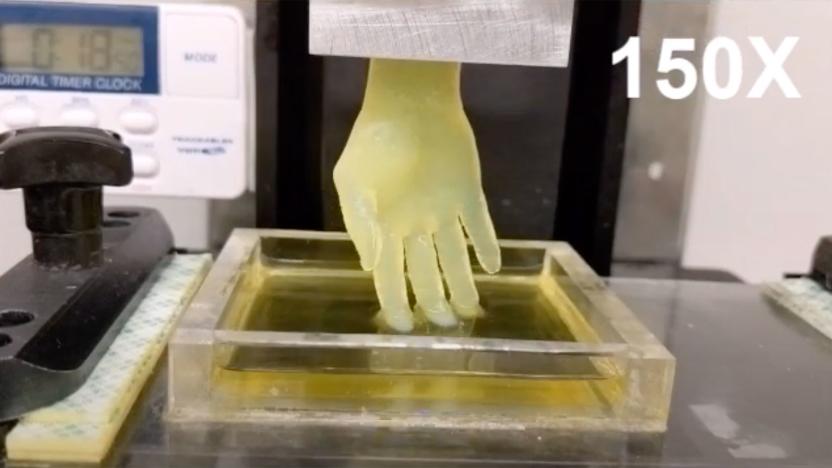
New 3D printing technique could make lab-grown organs more practical
A fast 3D printing technique could lead to healthy lab-grown organs that are ready in minutes rather than hours.

Scientists bioprint living tissue in a matter of seconds
Bioprinting holds great potential for repairing injuries, testing drugs or replacing whole organs, but it's currently limited in complexity, viability and speed -- you can't just create tissue on a whim. Soon, though, it might be a matter of crafting whatever you need when you need it. Scientists at EPFL and University Medical Center Utrecht have developed an optical system that can bioprint complex, highly viable living tissue in "just a few seconds." It would represent a breakthrough compared to the clunky, layer-based processes of today.
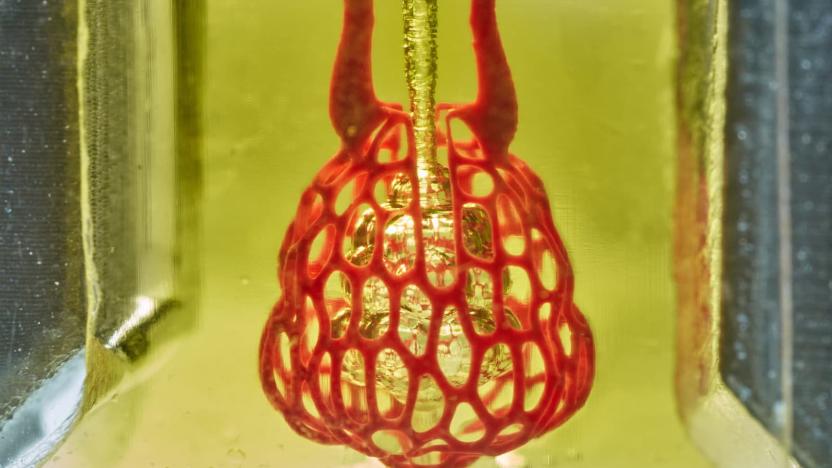
Bioengineers 3D print complex vascular networks
Bioengineers are one step closer to 3D printing organs and tissues. A team led by Rice University and the University of Washington have developed a tool to 3D print complex and "exquisitely entangled" vascular networks. These mimic the body's natural passageways for blood, air, lymph and other fluids, and they will be essential for artificial organs.
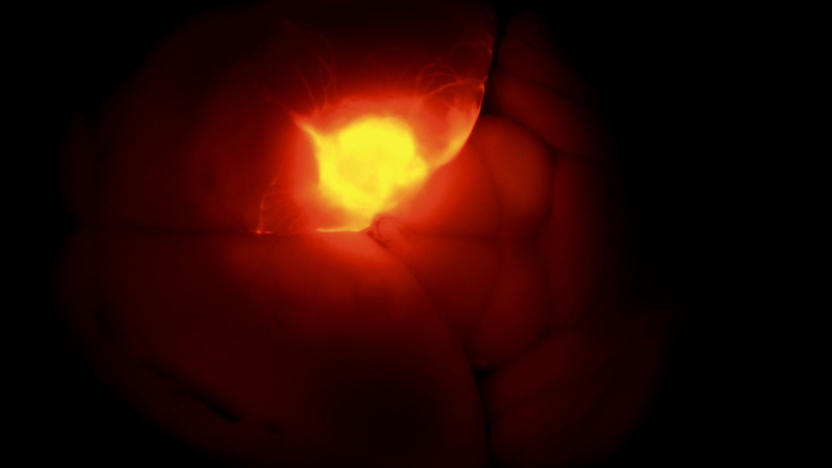
Scientists grow human brain tissue in mice
Brain "organoids" made from stem cells are a promising way to study the brain, but the longest they've survived in a petri dish is just five weeks. Researchers from the Salk Institute recently implanted a bean-sized brain organoid into a mouse, and covered it with a transparent window. The material was able to get a blood supply from the mouse and survived for up to 233 days, displaying the same properties and growth as if it were in a newborn. It's a big advance for organoids and could help scientists study and treat mental illness and brain injuries.

Researchers treat ear defect by growing implants from cells
While scientists have been working on growing organs and body parts like ears for some time, researchers in China have taken it one important step further. They've grown new ears for five children with microtia -- an ear defect that results in small, underdeveloped ears and often affects hearing -- grafted them onto the children and continued to observe the development for over two years. The work is important because it's the first study of its kind and shows that these sorts of methods stand to be a viable option going forward.
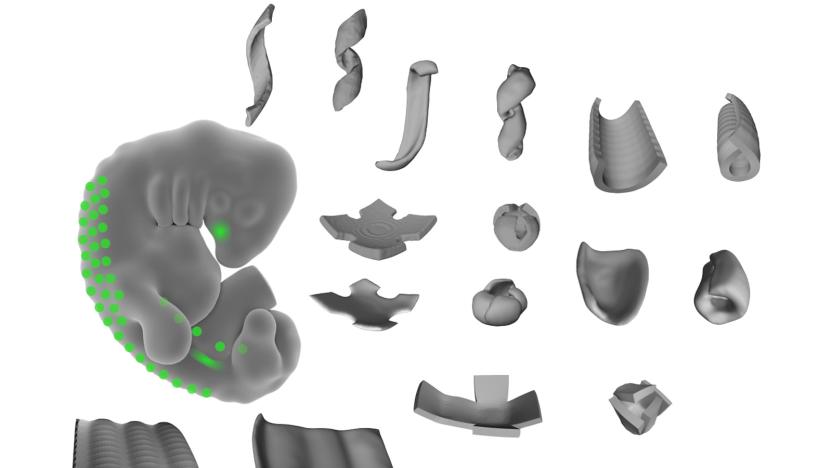
Scientists 'hack' cells to create 3D shapes from live tissue
Never mind 3D-printing organs -- the real dream is to make the tissue itself bend to your will, and UCSF scientists have managed just that. They've discovered that they can 'hack' special cells that help fold tissue (mesenchymal cells) to create 3D shapes out of live tissue. The trick is to lay out these cells in specific patterns that "tug" on other cells' extracellular matrix fibers. You can create surprisingly diverse items, ranging from simple bowls and ripples to decidedly unnatural items like cubes and coils.
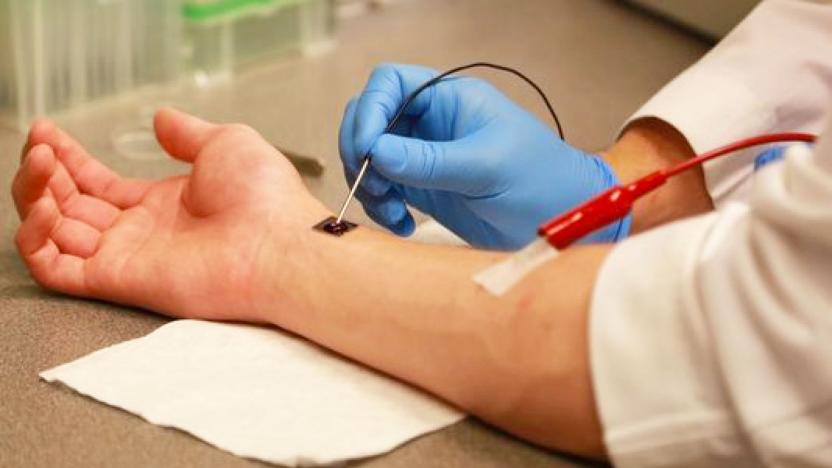
Fingernail-sized chip can repair damaged tissue in seconds
A new device can begin repairing damaged organs in seconds, heralding a major breakthrough for life-saving medicine. Developed at Ohio State University, the technology known as tissue nanotransfection (TNT) uses a small coin-sized silicon chip that "injects" genetic code into skin cells, converting them from one type to another.
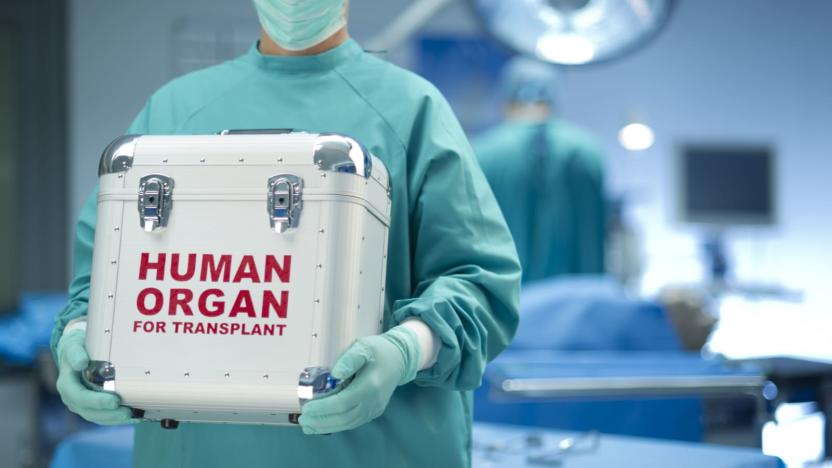
Nanoparticles fool your body into allowing organ transplants
Organ transplants are frequently life-saving, but they remain a gamble when your body can reject the new organ well after the initial surgery. Yale researchers have discovered a clever solution to this: prevent your body from noticing the organ until it settles in. They've developed a drug delivery system that uses nanoparticles to slowly supply small interfering RNA (siRNA) that stops your body's white blood cells from attacking the organ as a foreign presence. Instead of lasting mere days, the siRNA lasts as long as 6 weeks. This won't necessarily eliminate the rejection response, but it should be far easier to control if and when it kicks in.

AI can predict if you'll die soon by examining your organs
When not stealing blue collar jobs, robots are becoming Dr. House, diagnosing maladies like breast and skin cancer with aplomb. Scientists at the University of Adelaide have pushed it to a morbid new level, however, with an AI system that can tell if you're going to die. By analyzing CT scans from 48 patients, the deep learning algorithms could predict whether they'd die within five years with 69 percent accuracy -- "broadly similar" to scores from human diagnosticians, the paper says.
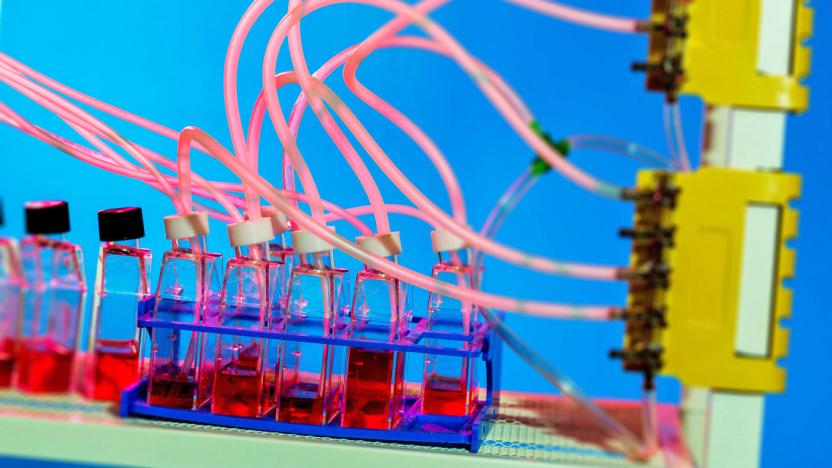
US pours $160 million into making tissues and artificial organs
Getting a viable organ transplant is a real problem. There are only so many donors to go around, and the organs that do show up might be tossed out if they're not used within a matter of hours. The US government isn't satisfied with this state of affairs, though. As part of a broader effort to reduce organ waiting lists, it's unveiling $160 million in public-private investments for a new Advanced Tissue Biofabrication Manufacturing Innovation Institute. The organization will develop techniques for repairing and replacing tissues that could lead to artificial organs. Simply speaking, you wouldn't need someone to donate an organ -- doctors could either fix damaged parts or transplant an artificial organ created on demand.

Researchers 3D print 'Lego bricks' of functional stem cells
A team of scientists from Beijing's Tsinghua University have reportedly devised a means of producing uniform embryonic stem cells with a 3D printer. These cells stack like organic Lego bricks and could form the structural basis for future lab-grown organs. "It was really exciting to see that we could grow embryoid body in such a controlled manner," lead author Wei Sun said in a statement. "The grown embryoid body is uniform and homogenous, and serves as a much better starting point for further tissue growth." The study published yesterday in the journal Biofabrication.

3D-printed livers go on sale to impatient scientists
So far, the biggest benefit of 3D-printing organs is that you don't need someone to donate their body to medical science before you can do an experiment. That's why Organovo's big news is so exciting for scientists, since the company has let it be known that its 3D-printed livers are now on sale. The bio-printed tissues can be used for drug testing programs, since causing unexpected liver damage is one of the biggest causes for pharmaceutical recalls. Unfortunately, with a rated lifespan of around 42 days, we won't be able to use these stamp-sized organs in transplants just yet, but who knows? Maybe in a few years time, the idea of asking a relative or close friend for a slice of their liver will be as outdated as sending them a fax.

Wearable artificial kidney hopes to gain FDA approval soon
As neat as your smartwatch is, there are other existing wearables which, you know, can actually make the world a world a better place -- though that's not to say whatever you have on your wrist now is useless and for pure vanity purposes. Aptly named the Wearable Artificial Kidney, a projected started back in 2008, this medical gadget hopes to make the dialysis process better for patients, thanks in particular to its portability features. As opposed to the more traditional, stationary machines found at hospitals or in homes, which tend to be extremely heavy, the current version of WAK weighs a mere 10 lbs (around 4.5 kg.) and can be attached around a person's waist.

Boston Children's Hospital preps surgeons with custom 3D-printed models
Undoubtedly, 3D printing has taken root in a variety of disciplines, and medicine is no stranger to leveraging its tool kit. At Boston Children's Hospital, surgeons are using printed models to prep for the operating room. "With 3D printing, we're taking a step that allows experienced doctors to simulate the specific anatomy of their patients and allows the best of the best to become even better," says Peter Weinstock, MD, PhD. Dr. Weinstock is working on an in-house service that's capable of constructing the models in short order. Using scans from the hospital's radiology department and a 3D printer capable of super high-resolution output (16 microns, to be exact), the models allow doctors to examine details of a baby's skull or brain. What's more, the machine can use multiple materials to sculpt the final result, simulating the unique facets of bone, skin and blood vessels individually. For surgeons-in-training, the custom-made prints can illustrate the details of a medical condition rather than an average look.

MakerBot chief believes self-driving cars will spur a need for 3D-printed organs
Self-driving cars are safer by their very nature, since they avoid the mistakes of human drivers. However, that improved safety may create some new problems -- at least, according to MakerBot founder Bre Pettis. He tells Fortune that scientists will likely have to step up work on 3D-printed organs if and when robotic vehicles take off, since a significant chunk of organ donations (which are already scarce) come from car accident victims. Pettis isn't disputing the value of reducing road fatalities, of course. The issue is more that hospitals have to be ready for possible shortfalls in natural transplants.

Scientists have figured out how to create blood vessels in 3D printed organs
While 3D-printed organs sound like a great idea -- imagine no longer waiting around for a transplant -- a major hurdle for printing internal ones thus far have been creating intricate blood vessels and ventricles that are required for the organ to actually, you know, work. Now, a collaboration between scientists from the University of Sydney, Harvard, Stanford and MIT have discovered a way to do just that. The team used an advanced bioprinter to create tiny interconnected fibers, and then coated them in human endothelial cells and a protein-based material, which hardens under light. They then removed the fibers, and voilà -- a network of capillaries was born.

Tiny power plant can charge a pacemaker through heartbeats
Pacemakers and other electronic implants are a pain to keep running -- patients need surgery to replace batteries, and body-powered generators aren't currently strong enough to charge these devices. They may be far more practical in the future, though, as American and Chinese researchers have developed a piezoelectric power plant that could charge an implant all by itself. The prototype machine generates electricity through the movement of nanoribbons that are tiny enough to be sewn into an organ's surface, but efficient enough to power a pacemaker solely through heartbeats. The device could also keep implants going through the motion of a diaphragm or lung. Scientists still need to test the long-term viability of this miniscule energy factory; there's no guarantee that it's safe enough to last for years inside a human body. If it proves useful, however, it could save implant recipients from repeatedly visiting the hospital for maintenance.

Researchers use 3D printer, sugar, to create a fake artery network for lab-grown tissue
Printing a chocolate heart is easy enough, but how about an actual organ? There are folks working on it, but it turns out those veins of yours aren't exactly a breeze to replicate. Researchers at the University of Pennsylvania and MIT may have found a semi-sweet solution -- dissolving a sugar lattice in a batch of living Jell-O. The research team uses a RepRap 3D printer and a custom extruder head to print a filament network composed of sucrose, glucose and dextran which is later encased in a bio-gel containing living cells. Once the confectionery paths are dissolved, they leave a network of artery-like channels in their void. Tissue living in the gel can then receive oxygen and nutrients through the hollow pipes. The research has been promising so far, and has increased the number of functional liver cells the team has been able to maintain in artificial tissues. These results suggest the technique could have future research possibilities in developing lab-grown organs. MIT Professor Sangeeta Bhatia, who helped conduct the effort, hopes to push the group's work further. "More work will be needed to learn how to directly connect these types of vascular networks to natural blood vessels while at the same time investigating fundamental interactions between the liver cells and the patterned vasculature. It's an exciting future ahead." Scientists at other labs could also get their mitts on the sweet templates since they're stable enough to endure shipping. Head past the break for a video of the innard infrastructure.

Cornell University scientists use 3D printer to engineer human ear made of silicone
Welcome to the future, where scientists can print body parts. No, seriously: researchers at Cornell University have used 3D printing technology to engineer a human ear out of silicone. This should one day soon open the door to the creating functional human body parts using DNA-injected 'ink.' The team at the Computational Synthesis Laboratory, led by Hod Lipson, are now testing the printer as a way to crank out synthetic heart valves. Check out the ear being synthesized in the video after the break.

Harvard scientists reverse aging in mice, laugh maniacally at human possibilities
The reversal of aging has been one of the great dreams of humanity, but it seems like our rodent overlords have beat us to it. The Harvard Medical School has demonstrated "a dramatic reversal" in the aging process when reintroducing the enzyme telomerase into old and feeble mice. What happened was that their naturally worn out organs started to regenerate, instead of degenerating further, bringing them back to a youthful state of health. Sadly, while the results of this study are hugely important, there are a couple of caveats to make: firstly, the mice in question were genetically modified to suffer from a lack of telomerase, which might have inflated the results of the tests relative to regular mice, but more importantly, an increase in telomerase in humans is "a hallmark of most human cancers." So, if you want a shot of Benjamin Button brew, you'll have to be very patient indeed. For now, let's just be happy that Algernon and his buddies have found their fountain of youth. [Thanks, Vygantas]










